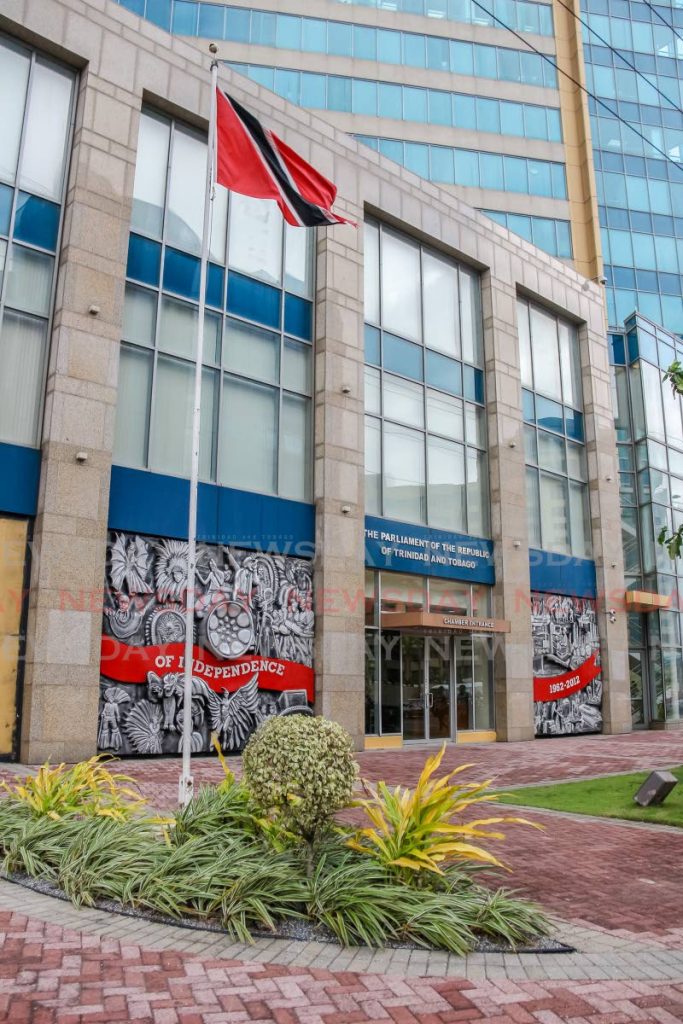Judiciary anxious to move into Tower D

PARLIAMENT returned to its original seat at the Red House on Friday, vacating Tower D at the International Waterfront Centre, Port of Spain, where it conducted the business of the people for the last eight years.
There are plans for the Judiciary to occupy the nine floors the Parliament once occupied.
Still, this move might not be any time soon as both Tower D and the Hall of Justice, which will house the civil and criminal courts, respectively, are to be remodelled to facilitate courtrooms.
The Judiciary said the building has not yet been handed over to them, but they understand “it will be soon.”
While not much work will be needed for the courts at the Hall of Justice at Knox Street, the layout will be reconfigured to accommodate additional police officers and holding cells for prisoners.
Plans are in train to get the designs required, the Judiciary said.
Udecott is handling the outfitting with the input of the Judiciary.
11 trial courts, 10 hearing rooms to be built
In his opening address for the 2019/ 2020 law term last September, Chief Justice Ivor Archie announced the impending move of the civil courts to Tower D.
“Now, as you know, we have long since outgrown the Hall of Justice and many of our support units are scattered all over Port of Spain in rented accommodation.
“And so we were thrilled to receive the news that when Parliament vacates Tower D at the Waterfront Complex, it will be handed to the Judiciary for immediate occupation,” he said.
Archie said the move will allow the Judiciary to “retain the Hall of Justice with its cells and appropriate circulations for criminal trial and appellate courts, while fitting out 11 trial courts and 10 hearing rooms, mediation rooms, Civil Appellate Courts and judicial officers’ chambers along with supporting services and the JEI (Judicial Education Institute) at the Waterfront location.”
He anticipated completing the move during the current law term, which ends in July.
Archie also disclosed that the move would give the Judiciary the opportunity to fit-out the first of several fully-equipped technology courts with state-of-the-art recording and presentation technology, including a facility for virtual appearances.
“This is indeed an exciting time for the Judiciary,” he said, adding, “Our only constraint is our ability to get all the people on-board and trained in record time especially the judicial officers.
“So I do need to sound a word of caution that due to attrition, promotions and the need to restart the appointment process the High Court will be a little undermanned for the first part of this year but we expect to recover that ground eventually through increased productivity.”
In its response to Sunday Newsday’s questions, the Judiciary said no determination had been made on additional staff.
It also said the appointment of judges was for the Judicial and Legal Service Commission, of which Archie is chairman, and the President.
The appointment of Masters for both civil and criminal courts is also a matter for the JLSC, Sunday Newsday was told.
Courthouse connection to Red House
It is a little known fact that the first government building on the site of the existing Red House, constructed between 1844 and 1848, comprised two blocks to remain open to St Vincent Street and Brunswick Square, now Woodford Square.
According to information provided by the National Trust on its website, in 1892, in an effort to provide much needed accommodations, alterations were carried out.
Two new buildings were erected on either side of the northern building, used for the Court House – one to house the Registrar, the other the Record Office.
Before the construction of the Hall of Justice, which began in 1979, the Supreme Court was housed at the Red House.
A Judiciary publication, available on its website, discloses there were several problems surrounding the use of the Red House as the home of the Supreme Court.
“It was not a reflection of an independent Judiciary as Parliament also held sessions at the Red House. There were several other issues as the building was not suitable for the special needs of a court. Several Chief Justices since Independence lobbied the government to build a Hall of Justice as a home for the Supreme Court.
The foundation stone for the Hall of Justice was formally laid by Sir Isaac Hyatali, Chief Justice and Selwyn Richardson, then-attorney general on November 1, 1979. The structure was completed in 1981 and the building was formally handed over in 1985.

Comments
"Judiciary anxious to move into Tower D"